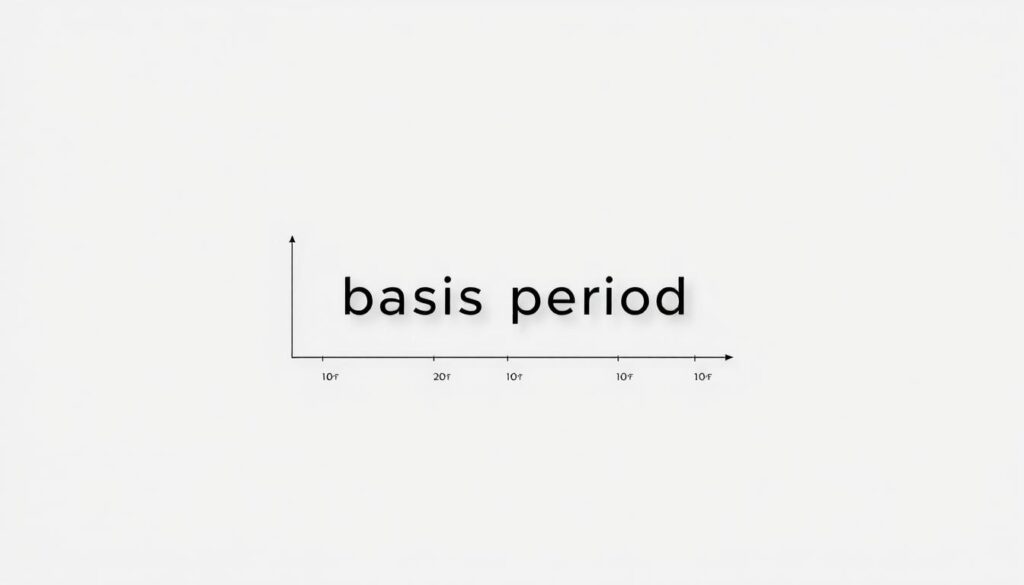We guide Malaysian companies through the statutory estimate process so you can manage cash flow and compliance with confidence.
CP204 is the prescribed form for a company’s estimation of chargeable income and monthly installments under Malaysia’s Self-Assessment System. You submit this declaration to LHDN to report projected corporate income tax for the Year of Assessment.
Filing the form helps spread your tax liability across the year rather than creating a lump-sum burden at return time. CP204A lets you revise that estimate in designated windows, so adjustments stay supportable and timely.
We advise integrating estimate routines into your monthly close. That keeps forecasting practical, reduces surprises, and keeps your finance team ready for LHDN queries.
Key Takeaways
- CP204 provides a structured monthly payment plan for corporate tax.
- Submit prior to the basis period start; new businesses follow the three-month rule.
- CP204A allows corrections within prescribed windows to keep estimates accurate.
- Integrate estimation into budgeting to protect cash flow and financing headroom.
- We help you document methodology so estimates withstand LHDN review.
What is CP204 in Malaysia and why it matters
Form CP204 records a company’s annual tax forecast and arranges monthly instalments to ease cash management.
Under Malaysia’s Self-Assessment System, the prescribed statement sets your schedule of monthly payments and shows projected tax payable for the Year of Assessment.
Definition, scope, and role
We treat the form as the mechanism the Inland Revenue Board uses to collect your estimated corporate income and schedule instalments. Companies and similar entities must forecast and submit their estimate at the beginning of the basis period.
Difference from CP500
Form CP204 targets corporate forecasts and instalment plans. By contrast, CP500 applies to prepayments for non‑salaried streams such as rental and royalties and follows a different notice and payment pattern.
| Feature | Form CP204 | CP500 |
|---|---|---|
| Primary users | Companies, trusts, cooperatives, LLPs | Individuals with non‑salaried income |
| Purpose | Estimated tax and instalment schedule | Prepayment notice for non‑salaried income |
| Filing | MyTax/e‑Filing (mandatory for certain bodies since 2019) | MyTax/e‑Filing |
Linking your accounting forecasts to the tax estimate improves cashflow planning and reduces end‑of‑year liability surprises. We recommend documenting assumptions to support any future submission or review by the revenue board.
Who must submit Form CP204 and when it starts to apply
Submission timing determines whether your projected tax payments stay orderly or trigger penalties.
Form CP204 applies to companies, trust bodies, cooperatives and LLPs as set out under Section 107C of the Income Tax Act 1967. Existing entities must complete their submission 30 days before the start of the basis period for the relevant assessment year.
New companies that commence operations must furnish the form within three months of starting trade when the first basis period is six months or longer. Trust bodies, cooperatives and LLPs have been required to e‑file via MyTax since 2019.
- We help you determine the correct deadline and prepare a defensible estimate tied to actual trading start.
- Submit CP204 electronically to the Inland Revenue via MyTax to avoid processing delays.
- If operations change, consider a revision through CP204A to keep instalments aligned with projected income.
Plan at least 30 days ahead. That gives time to validate numbers, secure approvals and avoid late submission penalties.
what is cp204: basis period, year of assessment, and key deadlines
Deadlines for the tax estimate hinge on your company’s accounting basis and the factual commencement of trading.

Understanding basis period vs. financial year-end
The basis period reflects the accounting period used for tax. It may align with your financial year-end but can differ if you change accounting dates.
Deadline rules and new businesses
Existing companies must submit CP204 30 days before the basis period beginning. For example, a basis period of 01.01.2025–31.12.2025 requires submission in late November 2024.
New businesses must submit within three months from the factual commencement date, provided the first basis spans at least six months.
| Scenario | Basis period | CP204 due |
|---|---|---|
| Existing company | 01.01.2025–31.12.2025 | 30 days before 01.01.2025 |
| New business (commence 01.04.2025) | 01.04.2025–31.12.2025 | Within 3 months of 01.04.2025 |
| Preparatory stage only | N/A | No commencement; no 3-month trigger |
Determining commencement
Commencement occurs when you start trading and generate income. Renting premises, hiring staff, or buying equipment alone does not count.
We reconcile accounts, verify first sales invoices, and document the start so your form cp204 and tax estimate stand up to review. If needed, we help you submit cp204 on time to avoid penalties on tax payable.
How to estimate tax payable for CP204
Start with a practical profit projection to convert management figures into a defensible estimated tax payable for the assessment year.
Forecasting chargeable income and deductible expenses
We produce a provisional tax computation by forecasting revenue streams, removing non-taxable items and modelling deductible expenses in line with the Income Tax Act.
Scenario analysis for sales swings, cost inflation and one-off items helps keep the estimate realistic and supportable.
Applying tax rates, capital allowances, and adjustments
Capital allowances reduce chargeable income; we match claims to your fixed asset register and commissioning dates.
Apply the correct corporate rate based on SME status. For non-SMEs a flat 24% rate generally applies when calculating tax payable.
The 85% minimum estimate rule and carryover logic
Your current year estimate must be at least 85% of the prior year’s estimate or amended figure. If a CP204A raises the estimate above instalments paid, the balance is spread over remaining payments.
Where revised estimates are lower, later instalments may be terminated. We link accounting close to the tax estimate so revisions have a clear audit trail.
SME exemption and notifications to LHDN
Qualifying small companies may be exempt from furnishing an estimate for the first two year assessment periods. The exemption under Section 107C(4A) applies when statutory conditions are met. We advise early review to confirm eligibility and document supporting records.
Qualifying as an SME for first two YAs exemption
To qualify, the company must be incorporated and resident in Malaysia. Paid-up capital must not exceed RM2.5 million at the start of the basis period.
- Control tests: No related company in the group may have paid-up capital above RM2.5 million.
- Ownership limits: Foreign ownership of paid-up capital must not exceed 20%.
- Management and control: Evidence such as board meetings held in Malaysia helps prove residency.
Advisability of submitting a zero estimate to avoid penalties
Even when exempt, we recommend a timely submission of a zero estimate on the prescribed form. A recorded submission minimises the risk of automated penalty notices.
Where a notice or penalty arises despite qualifying status, we prepare a waiver request to the local LHDN branch and align corporate records—share capital, minutes, and group structure—to support the claim.
We also monitor thresholds as your business grows and calendar critical months so you can submit cp204 or file a CP204A if circumstances change. This keeps your estimated tax payable defensible and compliant.
Submitting CP204 online: step-by-step and required details
A reliable online submission process starts with verified MyTax access and clear internal approvals.
Login can be performed by a company director via the MyTax portal or by an appointed tax agent. Trust bodies, cooperatives, and LLPs must e‑file since 2019.

MyTax/e‑Filing access, roles, and authentication
We guide you to set up MyTax access, verify the director profile, and assign preparer and approver roles well before the filing window.
Ensure director authorization or a signed mandate for your agent to avoid last‑minute access problems.
Information to prepare: basis period, estimate, schedule of installments
Prepare these data points: basis period dates, commencement date if new, estimated chargeable income, tax adjustments, and the proposed installment schedule.
- Confirm the correct Year of Assessment and submission date to meet statutory timelines.
- Validate company profile, tax reference number, and banking details for seamless payments and reconciliation.
- Draft internally, obtain director approval, then submit electronically and save the acknowledgment.
We set calendar reminders for installment due dates and integrate outputs to your accounting systems so you can track the schedule and payments. When ready, submit cp204 through MyTax with our checklist in hand.
Revising your estimate with CP204A
We schedule formal estimate reviews to keep your instalment plan aligned with trading performance.
Timing: Amendments are accepted during the 6th and 9th months of the basis period via the prescribed form CP204A. These windows let you capture mid‑year deviations and recalibrate the tax estimate.
How adjustments change instalment payments
If the revised estimated tax exceeds instalments already paid, we compute the shortfall and spread the balance evenly across the remaining instalment payments.
When the revised amount is lower, later instalments can be terminated to preserve cash flow while staying compliant.
Off‑cycle revisions and governance
Off‑cycle changes are possible by lodging an appeal to LHDN; approval is discretionary. We prepare a substantiated appeal, supporting financials, and board approvals to improve chances of acceptance.
- We run variance analysis to justify the tax estimate.
- We document assumptions in a CP204A memo to support later reviews.
- We update payment calendars and treasury plans once MyTax submission is complete.
“Timely revisions reduce risk and protect liquidity.”
Payment schedule and methods for CP204 installments
We set a clear payment calendar so your company meets instalment dates and protects cash flow. Monthly instalment payments are generally due no later than the 15th of each month.
Monthly instalment due dates and managing cash flow
We align the instalment schedule with your basis period and Year of Assessment. This gives treasury time to plan bank approvals and funds across entities.
If a revision changes your payable, we update remaining instalment amounts and notify finance to adjust payment runs. We maintain ByrHASiL acknowledgments for every posted payment.
FPX via ByrHASiL, card options, and discontinued cheque payments
- Preferred method: FPX via the ByrHASiL portal. We confirm your bank’s enrollment and internal sign-offs ahead of the run.
- Credit card payments on ByrHASiL are temporarily unavailable since 1 October 2022; cards remain accepted at PPTH Kuala Lumpur, Kuching and Kota Kinabalu with a 0.8% fee.
- Cheque payments by post or courier were discontinued from 1 January 2021; e‑payment is now standard to avoid rejections by the Inland Revenue.
- Our treasury checklist ensures correct payment references (tax reference number, instalment number and period) for allocation by the revenue board.
“Meeting monthly dates and using electronic channels reduces reconciliation risk and penalty exposure.”
Penalties, underestimation risks, and compliance best practices
Penalties for late filing and underestimation can materially affect cash flow. We focus on controls that limit exposure and keep your tax liability predictable.
Late submission and late payment penalties
Late submission of the form is an offence under Section 120(1)(f) and may attract fines from RM200 to RM20,000.
Missing an instalment due date adds a 10% surcharge on unpaid amounts under Section 107C(9). That quickly raises the tax payable and harms cash flow.
Underestimation thresholds and the 10% surcharge
If actual tax payable exceeds your estimate by more than 30%, Section 107C(10) applies a 10% penalty to the under‑estimated difference.
To limit this risk, keep monthly variance checks and consider a timely CP204A revision in the 6th and 9th months of the basis period.
Practical tips to avoid traps and document your basis
- Maintain strong accounting workpapers linking forecasts to assumptions and income.
- Document capital allowance schedules and non‑recurring items that affect the estimated tax payable.
- Set approval matrices and payment cutoffs to prevent missed tax payments.
- Align board minutes to support the tax estimate and any CP204 form revisions.
| Risk | Consequence | Mitigation |
|---|---|---|
| Late CP204 submission | Fine under Section 120(1)(f) | Timely calendar reminders and pre‑approval |
| Missed instalment | 10% surcharge under Section 107C(9) | Payment governance and reconciliations |
| Underestimate >30% | 10% penalty on shortfall (Section 107C(10)) | Monthly variance monitoring and CP204A |
“Proactive governance and clear documentation reduce penalty risk and strengthen your defense in any assessment.”
Conclusion
CP204 form anchors compliance and cash planning for companies. A defendable projection protects your business from surcharges and keeps instalments manageable.
Submit on time, set the correct basis period, and review the estimate monthly. Use CP204A when performance diverges to keep instalments aligned with reality.
SMEs that qualify for the two‑year exemption should still notify LHDN with a zero estimate to avoid automated penalties. We integrate these tasks into your finance calendar so forecasting, approvals, and payments run smoothly.
We provide end‑to‑end support—from determining commencement to preparing form cp204 and scheduling payments. Engage us to benchmark your estimated tax process and strengthen governance for the year ahead.
FAQ
What does Form CP204 cover and who issues it?
Form CP204 is an estimate of tax payable required by the Inland Revenue Board of Malaysia (LHDN) from companies and other chargeable bodies operating under the self-assessment system. It records your estimated chargeable income for the basis period and the resulting tax liability, which determines instalment payments for the year.
Which entities must submit CP204 and when does the obligation start?
Companies, trust bodies, co‑operatives and limited liability partnerships (LLPs) that fall under Section 107C must file an estimate if they have chargeable income. The filing obligation kicks in at the start of the company’s first basis period or within three months of commencement if operations begin mid‑period.
How does the basis period relate to the year of assessment and financial year‑end?
The basis period is the accounting period used to compute chargeable income for a particular year of assessment. It generally aligns with your financial year‑end but can differ for a first or change‑of‑accounting‑period scenario. Use the basis period to determine instalment timing and when to estimate tax payable.
What are the key filing deadlines for submitting the estimate?
The estimate must be submitted at least 30 days before the beginning of the basis period for the year of assessment. For newly commenced businesses, submit within three months from the commencement date. Late filing can trigger penalties and interest on unpaid instalments.
How should we determine the true date of commencement of operations?
The true commencement date is when the entity begins revenue‑generating activities, not merely incorporation. Consider the date you started trading, invoicing customers, or performing contractual services. Accurate determination ensures correct deadlines and instalment schedules.
How do we estimate tax payable for CP204 effectively?
Forecast chargeable income by projecting revenue and allowable deductions, include capital allowances and adjustments for non‑taxable items, then apply the appropriate corporate tax rates. Prepare a schedule of instalments based on the estimated tax payable and the statutory instalment frequency.
What computational elements should be included in the estimate?
Include forecasted gross income, deductible expenses, capital allowances, losses carried forward, and any tax incentives. Apply statutory tax rates and account for prior year overpayments or balances to arrive at the estimated tax payable and instalment schedule.
What is the 85% minimum estimate rule and how does carryover work?
If you revise estimates downward in subsequent submissions, the Inland Revenue expects instalments to equal at least 85% of tax liability to avoid surcharges. Underestimation can trigger additional charges; any overpayment can be carried forward or offset against final tax payable for the year of assessment.
Are SMEs exempt from submitting CP204 and how do we notify LHDN?
Qualifying small and medium enterprises may be exempt from instalment obligations for the first two years of assessment under certain conditions. We advise notifying LHDN promptly; submitting a zero estimate can be a practical measure to document your exemption and avoid penalties if eligibility is later questioned.
How do we submit the estimate online and what access do we need?
Submit via LHDN’s e‑services (MyTax/e‑Filing) using an authorised company user or tax agent account. Ensure proper authentication and prepare information including basis period, estimated chargeable income, estimated tax payable, and proposed instalment schedule before logging in.
What supporting information should be ready before submission?
Prepare the company’s basis period dates, projected profit and loss figures, reconciliation of accounting to tax adjustments, capital allowance computations, and the instalment schedule. Keep documentation to substantiate assumptions in case LHDN requests clarification.
When and how can we revise the estimate using CP204A?
You may revise estimates during the basis period, commonly at the 6th and 9th months, using CP204A. Off‑cycle revisions are possible by appeal or formal submission. Revisions adjust future instalment amounts and may reduce exposure to underestimation penalties when done promptly.
What is the instalment payment schedule and how are payments made?
Instalments are typically monthly or as prescribed for the company’s basis period. Payment dates align with the instalment schedule in your CP204 submission. Payments can be made via FPX through ByrHASiL or by card options; cheque payments have largely been phased out for online submissions.
What penalties apply for late submission or underpayment of instalments?
LHDN imposes penalties for late CP204 submissions and levies surcharges for underestimation of tax payable, which can include a 10% surcharge on the shortfall and interest on late amounts. Timely, reasonable estimates and prompt revisions reduce these risks.
How can we avoid common compliance pitfalls with estimates and instalments?
Keep clear financial records, reconcile accounting profits to tax calculations, document assumptions used in forecasts, and review estimates periodically. Engage a qualified tax advisor or registered tax agent to validate computations and file revisions when material changes occur.
Where can businesses find authoritative guidance and forms from LHDN?
Refer to LHDN’s official website for the latest CP204, CP204A forms, practice notes, and e‑filing guides. For complex situations or disputes, consult a certified tax consultant or the LHDN branch responsible for company tax administration.

